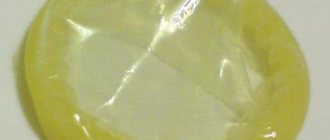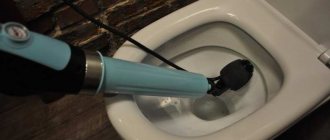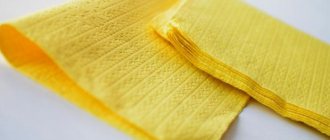In 95% of cases, sewerage in apartment buildings becomes clogged due to foreign objects falling into the drain. For example, many people are used to flushing cat litter down the toilet and not thinking about what this might lead to. Meanwhile, even granules from compressed sawdust can cause serious blockages.
Types of fillers
The most common cat litters include:
- Woody
- Mineral
- Silica gel
Wood filler
The wood filler is ordinary pressed sawdust with the addition of odor-eliminating flavorings. The advantages are low cost, environmental friendliness, ease of use, no toxic substances during production. Requires constant updating and throwing away the old one; an unpleasant odor may appear after four to five days. When moisture gets on the wood filler, it crumbles, but then when it dries, it forms a rather sweaty lump.
If you choose wood filler, it is better to choose one without aromatic additives. The smell of pine needles, pine, and fruit trees is itself a natural odor absorber, and animals will perceive them better. The combination of pine shavings and fruit flavors under the influence of cat urine often creates a sickening “aroma.”
Total possibility of flushing into the toilet:
- Wood pellets made from pressed sawdust get soaked quite quickly when they get into water. In any case, this is true for most fillers of the middle and low price category, made with minimal addition of impregnations.
- This property allows you to safely flush small portions of granular sawdust down the toilet: if the wood does not have time to swell and crumple before it ends up in the sewer or septic tank, then there will be no problems.
- At the same time, trying to empty the entire tray at once and wash it off in one go is practically doomed to failure. A few liters of water from the tank is clearly not enough to remove a large volume of sawdust, and while the container is being filled again, the material will have time to form a fairly dense plug.
Mineral filler
It is made on the basis of the mineral components of bentonite clay and other components (zeolite, vermiculite) with high moisture absorption capacity.
Their main difference and advantage is their high adsorption ability to absorb large amounts of liquid without leaving an odor.
Flushable toilet, mineral cat litter:
- The difference between mineral filler and wood filler is that it clumps almost instantly. On the one hand, this is an advantage when using the material for its intended purpose, but on the other hand, it becomes a frequent cause of blockages.
- This is why bentonite granules can only be thrown away in very small quantities . Actually, owners of frequency cats do just that: they picked out fresh lumps with a scoop, washed them down the drain, and added a new portion to the tray.
- If you pour the entire contents of the tray down the drain, then a blockage in the toilet is almost guaranteed. And even if you manage to quickly wash away the clay with a stream of water, somewhere below it will definitely find an elbow or a bend in the pipe and form a blockage, which will be very difficult to destroy.
Silica gel filler
Excellent modern practical material, requires replacement every 3-4 weeks. Eliminates odors completely. Its main drawback is its high price, so it is not so widespread.
All litter materials are successfully disposed of in the trash without causing an environmental disaster, but some want to take the easy route by flushing cat litter down the toilet.
instructions
Moreover, on some filler packaging it is written that it can be flushed down the toilet .
- Silica gel in trays is used in fairly small quantities: it absorbs liquids and odors quite well, so there is no need to add a lot of filler.
- At the same time, the discussion “If you use silica gel filler, is it possible to wash off large volumes of it?” are ongoing. This is due to the declared danger of the material for the environment.
- In fact, the substance that is used to adsorb cat waste is chemically inert. So the main danger is not the release of toxins into the water or soil, but the swelling of the granules. If you pour out a lot at once, a blockage will form not in the toilet, but in the pipes located below, and it will be almost impossible to remove it.
Conclusion: It is not recommended to flush anything that has the ability to absorb moisture into the toilet. including silica gel filler.
It is especially not recommended to do this in old houses, where the pipes have not been replaced for a long time, which have become rough and trap any debris.
There were examples when, for this reason, precisely because of cat litter, neighbors were drowned from the fifth floor to the very first, and after that they dealt with the neighbors and the courts for more than two years.
It’s easier to pour it into a separate garbage bag and, after twisting it so that it doesn’t crumble and the smell doesn’t spread, throw it in the trash can, and then into the garbage chute.
Or buy wood filler.
Video: What is prohibited from washing off. The cat litter clogged the toilet and pipes.
Methods for removing blockages
Mechanical pipe punching
If trouble does occur, and as a result of a large amount of filler getting into the sewer system, it is necessary to take action.
You can deal with blockages like this:
- If the incident has just happened, and the bulk of the material is in the toilet itself, you need to remove it from there as quickly as possible. To do this, we put a rubber glove on our hand and scoop out everything we can reach.
Advice! If you don't have gloves, you can wrap your hand in a plastic bag.
- After manually cleaning the toilet, you need to push the residue (there should be relatively little of it) into the pipe itself. To do this, install a plunger on the drain hole, press the rubber socket tightly to the surface and begin pumping, as during normal cleaning.
Using a plunger to remove a blockage
- To make the work more efficient, it is advisable to add a small amount of water to the toilet. However, do not overdo it - if the cork is very dense, then you will have to remove the water by scooping it out.
- When sawdust filler gets into the pipes, a plunger should be enough. But bentonite is capable of blocking the lumen “tightly”, so the plug will have to be destroyed mechanically.
- To do this, we use a cable with a special attachment, which we screw into the jam and destroy it. Our goal is to punch a hole in the center of the pipe, and then the flow of water will gradually wash away the contamination.
The spiral tip of the cleaning cable should screw into the blockage relatively easily
Chemical methods
In some cases, the filler does not form a blockage, but simply accumulates in the drain and reduces the throughput of the sewer.
Here you can cope with the situation using chemicals:
This or a similar remedy may also help
- We pour granular powder into the pipes in the most problematic area.
- Add a small amount of water and leave for about 20-30 minutes to react.
- After this, we thoroughly rinse the system, draining the water from the tank several times.
- Acid products are considered the most effective, since they are good at destroying organic matter accumulated in the sewer.
So what kind of cat litter is flushable?
In principle, it is possible to wash off wood filler, but it is highly undesirable to do so. You need to wash it off a little, in small portions, each portion no earlier than half an hour later. If you flush it down the toilet, you do so at your own risk, as clogged sewer pipes can cost you more. Wood filler dissolves and can circulate through the sewer system, but if there is wear on the sewer, blockage of joints and bends, which weakens the pressure of the drain, this filler, when dried, creates additional blockage leading to repair and cleaning of the pipes.
The most correct and safest way is to throw it in a solid waste bin and not fall for the marketing tricks of filler manufacturers.
What happens when wood filler is flushed down the drain?
Questions about whether wood filler can be flushed down the toilet and how to do it arise mainly due to ignorance of what happens when trash gets into the sewer.
As soon as the filler material is in water, it begins to swell. Already used wood pellets are no exception. They soften and swell to a pulp. It is this property that makes it possible to flush the material into the sewer. It also causes blockages.
When a small amount of filler is washed off, the softened sawdust easily passes through all the bends of the toilet and pipes into the collector. But if a large volume of wood dust is discharged into the sewer at a time, the amount of water from the tank is not enough to “push” the material into the general house drain. The used filler remains in the bend of the toilet drain. Its volume swells unevenly. Inside the total mass, the rot remains dry, and areas with air form in it. This leads to the appearance of a kind of plug, which becomes the cause of a blockage.
Why is it forbidden to wash off mineral and silica gel filler?
In a matter of minutes, the mineral filler clumps into a lump, ending up in the sewer network. It is strictly forbidden to wash it off! If you try to wash it off in parts, then the problem may not occur for the time being, but if you wash it all off at once, then a blockage will be inevitable. Removing it will take a long time and not be easy. Do not wash off clumping litter!
Silica gel is used very sparingly, absorbing odors and moisture. Disposing of granules down the toilet drain will cause blockages deep in the sewer pipes, where they will swell, causing problems for you and your entire home. It will be impossible to remove such a blockage with a plunger or a sticker film.
In what cases are sewer clogs likely?
In addition to the composition of the product used by animal owners for their toilet, the initial condition of the sewer pipes also plays an important role in the question of whether wood filler can be flushed down the toilet or some other kind.
For example, if the drains in an old house have not been changed for several decades, then the likelihood of a blockage increases significantly, even if you only flush wood products down the toilet and do this in small quantities.
There is also a high probability of clogging of sewer pipes when a large amount of waste filler is flushed at a time. The toilet is quite complex; there are specific bends in the drain. The design is made in this way in order to prevent the release of unpleasant odors and the rise of wastewater from the pipes. If you flush a full tray of waste filler into the toilet at once, it will inevitably “get tightly stuck” in one of the bends of the drain or behind it, in the pipe.
What to do if the toilet is clogged with cat litter
If this problem happens and your toilet is clogged with cat litter, you can try to break through the blockage with a plunger or a plastic bottle, especially if the blockage is located nearby and not much.
Please note that toilet plungers are different from sink plungers.
If it was not possible to clean it in this way, a plumbing cable will come to the rescue, which eliminates most problems with clogged sewer pipes. A very convenient thing, it rolls up into a coil and does not require much storage space.
Toilet and cat litter
What to do if a blockage appears?
If your toilet is clogged with cat litter, there is no need to panic. Such a blockage can be easily eliminated on your own. In the case when wood dust forms a plug in the toilet itself, it is removed mechanically, that is, manually. This process is quite unpleasant, however, it is necessary, because the longer the waste mass of filler is in the drain hole, the denser it becomes.
Of course, it’s better to prevent blockages from occurring, but if the toilet still gets clogged, how do you unclog it? The procedure is as follows:
- put on high and thick rubber gloves on your hands; if you don’t have any, you can replace them with bags;
- remove the clogged contents from the toilet drain and throw it away;
- press the flush button; if the water doesn’t drain well, use a plunger to “break through” the remaining debris;
- Pour into the drain any cleaning agent sold in household chemical departments.
As a rule, these actions are enough to correct the situation.
In 95% of cases, sewerage in apartment buildings becomes clogged due to foreign objects falling into the drain. For example, many people are used to flushing cat litter down the toilet and not thinking about what this might lead to. Meanwhile, even granules from compressed sawdust can cause serious blockages.
How to clear a clogged toilet from paper?
You need to insert a cable into the drain hole and push it down the pipe until you hit the clog. After this, you will need to push it further into the sewer, or hook it with a hook and pull out the pipes. It is ideal to carry out the operation together, when one will hold the handle and the other will operate the end of the cable.
Interesting materials:
How to enable subtitles on Kinopoisk? How to get to the Salaryevo bus station by metro? How to add to the blacklist on an old Samsung? How does Martini Bianco taste? How to temporarily disable the Kyivstar tariff? How to dial Yandex Taxi? How to get a lot of followers on Tik Tok? How did the Battle of Kulikovo Field begin? How did the war with Finland start? How to start footer from page 3?
Which to choose
Before choosing silica gel cat litter, you need to find out the manufacturers and what features their products have.
Types of silica gel fillers
There is a certain rating of silica gel litters for cat litter, which can be used to determine the quality of the product.
- Siberian cat. High quality, harmlessness, low price are the main advantages of mixtures produced by the Russian manufacturer.
- 1 crystals. Another Russian manufacturer that produces premium products. You can buy it at a reasonable price. Has antibacterial properties.
- Tailtail. Russian manufacturer producing two-color granules. It is odorless and does not stain your pet's paws.
With a wide range of cat litter mixtures to choose from, you can find one that is right for your cat. It is better to refrain from buying the cheapest compounds. They can harm your cat's health.
Silica gel fillers have high moisture absorption properties. However, it is better not to buy it for kittens to avoid problems with swallowing granules. Owners of furry pets need to carefully monitor the animal’s reaction to synthetic material. If used correctly, health problems can be avoided.
Japanese plant filler with meadow herbs
The cost for 7 liters (2.6 kg) is 999 rubles, in terms of 100 g - 38 rubles. 42 kopecks
Ingredients: corn cake, antibacterial agent, citric acid, flavoring, plant extract.
One of the “chips” of this filler is that it is safe if ingested. That is, if your animal suddenly decides to eat it, then nothing will happen. In addition, this filler effectively eliminates odors, is hypoallergenic, does not generate dust, but most importantly, it can be flushed down the toilet!
Cost for 7 liters (2.65 kg) - 1016 rubles, in terms of 100 g - 38 rubles. 34 kopecks
Ingredients: starch, recycled paper, polymer, antibacterial agent.
This filler also eliminates odors, is hypoallergenic, does not generate dust, and also flushes down the toilet!
conclusions
So, based on the above, we can conclude what kind of cat litter can be flushed down the toilet?
- The sewer can only “absorb” wood, paper and vegetable fillers, and it is not recommended to empty the entire tray at once - you need to wash it off in small batches.
- Can clumping litter be flushed down the toilet? Mineral and silica gel are clumping types. Mineral - can be washed off, but only a small portion with feces. But silica gel - absolutely not, just throw it in the garbage chute.
Usually the packaging contains the manufacturer's recommendations for disposal of this product. If you follow these rules, you will not face any blockages.
Using cat litter is a very convenient thing for animal lovers. But the question arises about disposing of cat litter: can it be flushed down the toilet? If not, then what kind can it be? There are many stories on the Internet about what problems can result from throwing litter down the toilet.
Classification
There is only one correct answer to the question: “Is it possible to flush cat litter down the toilet?” It all depends on what material the filling is made of. As already mentioned, any type of it can cause problems with the patency of sewer pipes, but some materials tolerate flushing better, while others - worse. Let's take a closer look at the most common options.
Woody
For its production, pressed sawdust is used, sometimes with aromatic impregnations. When moistened, the wood first flakes and then comes together in clumps. The advantages of wood fillers include:
- Relatively low price.
- Ecological cleanliness, absence of substances harmful to health.
- Easy to dispose of (it’s much easier to get rid of it).
Disadvantages include the need for frequent replacement. If you do not replace the litter box in time, then after 4-5 days you will begin to be bothered by unpleasant “odors” from the cat’s litter box.
Important! Practice shows that it is better to buy fillers without flavors. Fruit tree shavings have a natural, pleasant odor and mask stool odors well. Artificial fragrances, on the contrary, form an unbearably sickening “amber” with cat urine. In addition, the smell of citrus fruits repels the animal.
Mineral
The basis of the mineral filler (for example, katsan) is bentonite clay, as well as other substances with good absorption capacity (vermiculite, zeolite). When wet, the mixture clumps and can be easily removed using a special scoop.
Important! The main advantage of clay materials is that they not only absorb liquid well, but also absorb odors.
Silica gel
This is the most modern and practical option, the only drawback of which is the relatively high cost. You can change such consumables once every 2-3 weeks, there is practically no unpleasant smell. But it is not advisable to use this filler for kittens, since they chew the granules, and this can harm the baby’s health.
Paper
Unfortunately, paper-based filler is rarely found in retail sales. Japanese products are considered the best here. It can be found on the websites of special online stores selling Japanese pet products. There is only one drawback - the high price.
Vegetable
Like paper, vegetable litter (such as corn) can be disposed of down the drain. But, unfortunately, this is where their advantages end. Next come the downsides:
- The filler is lightweight, which means it spreads throughout the apartment.
- Doesn't neutralize odors well (2 days and an unbearable stench).
Important! This option can be used if the pet suffers from allergies to all other types of materials.
A separate type of vegetable fillers is based on soy fiber. Unlike corn, they have excellent performance qualities. The disadvantage is the same as with paper products - high price.











